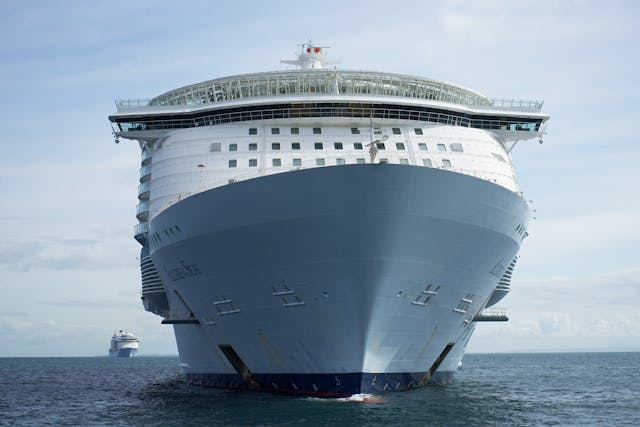Sustainable Hull Cleaning: Best Practices to Reduce Biofouling and Environmental Impact
Maritime transportation has always been a vital part of our lives, whether it’s delivering goods across oceans or taking us on memorable adventures at sea. It’s an industry that bridges countries and cultures, making the world feel smaller and more connected. But, like many industries, it has its share of environmental challenges. One of the less talked-about issues is biofouling—when algae, barnacles, mussels, and other organisms latch onto a ship’s hull. While this might seem harmless, it’s a bigger problem than you’d think.
Biofouling slows ships down, making them burn more fuel and release more greenhouse gases. It’s also a major culprit in spreading invasive species, which can wreak havoc on marine ecosystems. In fact, experts estimate that up to 70% of aquatic invasive species travel via biofouling. This makes it a silent but serious environmental concern that we can’t ignore.
Thankfully, there are ways to tackle this issue sustainably. By cleaning your vessel’s hull in an eco-friendly way, you can save fuel, improve performance, and protect our oceans. In this guide, we’ll break down the best methods, share real-world tips, and provide expert insights to help you make informed, responsible choices for hull maintenance.

In This Article
- Why Is Hull Cleaning Important?
- How Often Should You Clean Your Hull?
- Sustainable Hull Cleaning Methods
- Leading Sustainable Hull Cleaning Services
- Conclusion
Why Is Hull Cleaning Important?
When we talk about ships and the environment, most people think of emissions or oil spills. But there’s another, often overlooked factor: the state of a vessel’s hull. Keeping the hull clean isn’t just about appearances or maintenance; it’s a critical step toward protecting our oceans and improving a ship’s efficiency. Let’s break this down in simple terms.
1. The Environmental Impact of Biofouling
Imagine your ship’s hull as a sleek swimmer cutting through water. Now, picture algae, barnacles, and mussels clinging to its surface, creating drag. This phenomenon, called biofouling, doesn’t just slow down the ship; it makes the engine work harder, burning more fuel and releasing more greenhouse gases. According to the International Maritime Organisation (IMO), biofouling can increase fuel consumption by up to 40%. That’s massive, considering maritime shipping already contributes to about 3% of global greenhouse gas emissions.
But there’s more. Biofouling doesn’t stay on the hull. As ships travel across oceans, they unintentionally carry these organisms to new habitats, introducing invasive species. These species often outcompete native marine life, upsetting local ecosystems and endangering biodiversity. Runa Skarbø, a senior adviser on shipping at Bellona, explains it best: “Scientists estimate that up to 60-70% of aquatic invasive species are spread through biofouling.” This isn’t just an environmental issue—it’s a direct threat to fisheries and coastal economies worldwide.
2. Operational and Financial Benefits
Beyond environmental concerns, biofouling hits shipowners where it hurts: the wallet. Ships are designed to glide efficiently through water, but biofouling acts like a stubborn anchor, dragging down performance. Cleaning the hull regularly helps in several ways:
- Fuel Savings: A clean hull uses less energy to move, which means burning less fuel. For ships, this translates into thousands of dollars saved every single day.
- Faster Voyages: Less drag means shorter travel times. In the shipping industry, time is money.
- Hull Protection: Allowing biofouling to accumulate often requires harsher, abrasive cleaning methods later. This can damage anti-fouling coatings, which are designed to prevent growth in the first place. Regular, gentle cleaning preserves these protective layers and extends the hull’s lifespan.
3. Case Study: How Regular Cleaning Pays Off
Let’s put this into perspective. Take a medium-sized cargo ship that burns 100 metric tons of fuel daily. If biofouling increases fuel use by 20-40%, that’s an extra 20-40 metric tons of fuel every day. With fuel costing around $500 per metric ton, the ship owner is spending an additional $10,000 to $20,000 per day—just because of a dirty hull.
Now, consider the savings from regular hull cleaning. By keeping the hull clean, that same ship could save $10,000 daily in fuel costs. Over a year, those savings could amount to millions. And it’s not just about money—it’s about cutting emissions too. For every ton of fuel saved, nearly 3 tons of CO2 emissions are avoided, making hull cleaning a win-win for businesses and the planet.
How Often Should You Clean Your Hull?
How often you clean your vessel’s hull really depends on where and how you’re using it. Factors like the type of water you’re sailing in, your vessel’s speed, and the coating on your hull all play a role. But here’s a general rule of thumb: most experts suggest a good hull cleaning every six months. If your boat spends a lot of time in warm, nutrient-rich waters—which are hotspots for biofouling—you might need to check and clean it more often, maybe monthly or every two months.
Leaving it too long can make things harder and more expensive. When biofouling builds up too much, you’ll need stronger tools to remove it, and that can end up damaging the special coating on your hull. These coatings are designed to help prevent fouling, so if they’re compromised, you’re looking at reduced efficiency and more frequent cleaning in the future.
The good news is that there are sustainable cleaning methods available that balance keeping your hull in good shape with protecting the environment. These approaches, like using eco-friendly cleaning agents or hiring local dive teams, are gentler on your hull and the marine ecosystem. Regular cleaning also ensures your boat performs at its best, saving you fuel and money in the long run.
So, the key takeaway? Don’t wait too long. Plan your cleanings based on where you operate and stay ahead of biofouling. Not only will your vessel thank you with better performance, but you’ll also be doing your part to minimise environmental harm. It’s a win-win for you and the oceans we all rely on.
Sustainable Hull Cleaning Methods
Each of these approaches offers unique advantages and considerations, and they all emphasise one goal: protecting marine ecosystems while maintaining your vessel’s performance.
1. Eco-Friendly Chemical Cleaners and Gels
Eco-friendly chemical solutions are designed to tackle biofouling without causing harm to the marine environment. These products are applied directly to the hull underwater, either by divers or robotic systems. Once applied, the chemicals work to dissolve biofouling organisms like algae, barnacles, and mussels. After sufficient time, the dissolved organisms are washed away, leaving the hull clean and more hydrodynamic.
- Application Time: The process takes anywhere from 8 to 24 hours, depending on the severity of the biofouling and the type of chemical used.
- Cost: Pricing starts at $3,000 and can increase based on the vessel size and the level of fouling.
- Environmental Impact: These products are biodegradable and formulated to minimise chemical runoff, ensuring that the surrounding marine life is not adversely affected.
This method is ideal for vessel owners looking for a balance between efficiency and environmental responsibility. It’s particularly popular among those operating in regulated waters where strict environmental laws prohibit the use of traditional, more harmful cleaning agents.
2. Biological Cleaning Agents
Biological cleaning agents represent an innovative and sustainable approach to hull cleaning. These agents use naturally occurring enzymes or bacteria to break down the organic matter that makes up biofouling. The process is non-invasive and ensures minimal disruption to the marine ecosystem.
- Application Time: The cleaning process requires patience, taking several days to a week for the biological agents to effectively break down the fouling.
- Cost: Treatments range from $2,000 to $5,000, depending on the vessel’s size and the extent of the biofouling.
- Advantages: Since this method is non-abrasive, it helps preserve the vessel’s anti-fouling coatings, reducing the need for frequent reapplication.
For owners of leisure or research vessels who prioritise sustainability, biological cleaning agents offer a gentle yet effective solution. Although slower than other methods, the reduced environmental impact makes it worth considering.
Learn More: How Do Composting Toilets Work? An Expert Guide
3. Underwater Cleaning Robots
Underwater cleaning robots, or remotely operated vehicles (ROVs), are a technological game-changer in the world of hull cleaning. Equipped with rotary brushes or water jets, these robots can remove fouling with precision, ensuring that the vessel’s coatings remain intact. They are remotely operated, allowing for safe and efficient cleaning even in challenging underwater conditions.
- Cleaning Speed: These robots can clean up to 1,500 square feet per hour, making them a fast option for larger vessels.
- Cost: The upfront cost of purchasing an ROV ranges from $50,000 to $200,000. For occasional use, rentals are available at $2,000 to $10,000 per session.
- Efficiency: Robots are ideal for frequent cleaning, which can significantly reduce long-term operational costs by maintaining the vessel’s fuel efficiency.
For commercial vessel operators, investing in an underwater cleaning robot can pay off in the long run. It’s a cost-effective and environmentally conscious solution that also reduces the need for manual labour.
4. Local Diving Teams
Hiring local diving teams is a tried-and-true method for hull cleaning. Divers use manual tools and small machinery to remove biofouling, ensuring a thorough clean with minimal environmental impact. This method is particularly effective in regions where local expertise is readily available, such as ports in Southeast Asia or Central America.
- Cost: Prices range from $1,000 to $5,000 per session, depending on the vessel’s size and the complexity of the fouling.
- Cleaning Duration: The process typically takes 6 to 24 hours, making it a relatively quick option for smaller to mid-sized vessels.
For vessel owners who prefer a human touch and want to support local economies, hiring a diving team is an excellent choice. Additionally, divers can inspect the hull for any structural issues during the cleaning process, offering added value.
5. Dry Dock Cleaning
Dry dock cleaning is the most resource-intensive method, but it allows for a comprehensive inspection and maintenance of the hull. This process involves lifting the vessel out of the water, giving technicians unrestricted access to the entire hull. While it’s not the most sustainable option due to the resources required, it’s indispensable for vessels with extensive biofouling or structural concerns.
- Advantages: The thoroughness of dry dock cleaning is unmatched, making it the best choice for vessels needing significant maintenance or repair.
- Considerations: This method is less eco-friendly due to the energy and infrastructure involved in dry docking.
Making the Right Choice
Selecting the best hull cleaning method depends on your vessel’s needs, your budget, and your commitment to environmental sustainability. Whether you opt for eco-friendly chemicals, biological agents, robotic cleaners, local divers, or dry docking, each method has its unique advantages. The key is to balance efficiency, cost, and environmental impact to ensure that both your vessel and the oceans remain in top condition.
Leading Sustainable Hull Cleaning Services
1. ECOsubsea
ECOsubsea is a pioneer in eco-friendly hull cleaning. Their technology is designed to clean vessels while capturing biofouling (like algae and barnacles) and harmful pollutants. What makes them special is their ability to clean hulls effectively without releasing anything harmful back into the water. This Norwegian company works across Europe, including in Norway, the UK, France, the Netherlands, and Belgium.
Why It Matters: Over the years, ECOsubsea has removed an impressive 172,699 kilograms of biofouling. That’s not just dirt off ships—it’s invasive species and pollutants that never make it into the water, helping protect marine ecosystems.
2. GAC Panama
If your ship sails through the Panama Canal, GAC Panama’s services are worth considering. They use cutting-edge Remotely Operated Vehicles (ROVs) to clean hulls. These robots are equipped with adjustable seawater jets that gently remove biofouling without damaging anti-fouling coatings. This method not only keeps the hull clean but also ensures the longevity of protective paint layers.
Sustainability in Action: GAC Panama doesn’t stop at cleaning. They have a full waste collection system, meaning all the removed biofouling is filtered, collected, and handed over to approved environmental waste companies for proper disposal.
Tips for Sustainable Hull Cleaning
- Choose Non-Toxic Coatings: Eco-friendly anti-fouling paints are a great investment. These coatings help prevent the build-up of algae, barnacles, and other organisms naturally, without releasing harmful chemicals into the water. Not only do they reduce your cleaning workload, but they’re also kinder to marine life.
- Schedule Regular Inspections: Think of it like going to the dentist for regular check-ups. Frequent inspections help you spot biofouling early before it becomes a major problem. Catching issues sooner means you can use less abrasive cleaning methods, saving your hull’s protective coating and keeping cleaning costs down.
- Use Certified Cleaning Services: When hiring professionals, check their credentials. Certified cleaning providers follow strict environmental standards to ensure the waste from hull cleaning doesn’t harm marine ecosystems. It’s worth paying for expertise that aligns with eco-friendly practices.
- Educate Your Crew: A well-informed crew can make all the difference. Teach them about sustainable hull cleaning methods and how to minimise biofouling through proper maintenance. When everyone’s on the same page, it’s easier to keep your vessel running efficiently and sustainably.
Learn More: Green Alternatives to Septic Systems
Conclusion
Hull cleaning is more than a maintenance task; it’s a responsibility toward the environment. By adopting sustainable practices and leveraging eco-friendly technologies, vessel owners can reduce fuel consumption, curb invasive species, and contribute to a healthier planet.
Invest in solutions that balance operational efficiency with environmental stewardship. Whether it’s hiring local divers, investing in ROVs, or partnering with companies like ECOsubsea, sustainable hull cleaning is an investment in the future of maritime transportation.
Interactive Element: Cost-Benefit Analysis Table
| Method | Initial Cost | Maintenance Frequency | Environmental Impact | Long-Term Savings |
|---|---|---|---|---|
| Eco-Friendly Chemicals | $3,000+ | Semi-Annual | Low | Moderate |
| Biological Cleaning Agents | $2,000-$5,000 | Annual | Minimal | High |
| Underwater Cleaning Robots | $50,000-$200,000 | Quarterly | Very Low | Very High |
| Local Diving Teams | $1,000-$5,000 | Bi-Annual | Low | Moderate |
| Dry Dock Cleaning | $10,000-$50,000 | Annual | Moderate | Moderate |
Take action today to ensure your vessel sails efficiently and sustainably. The ocean’s health depends on it.







